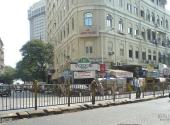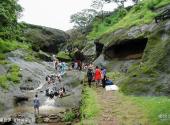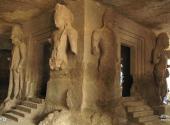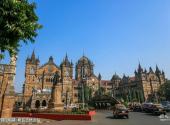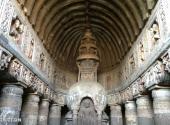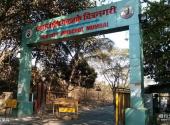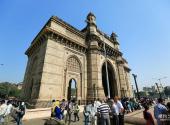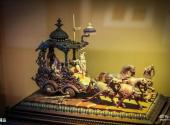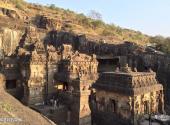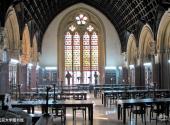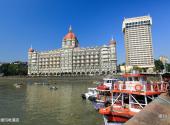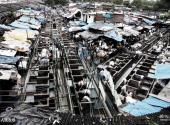
Scenic spot introduction:
Mumbai, India, is known as India's "Western Gateway" and "Queen's Necklace". It is the base camp of India's famous film and television industry "Bollywood". As the country's largest seaport and the commercial and entertainment capital of India, Mumbai is like China's Beijing, Shanghai and other places. Regardless of rich or poor, it is the object of people's rush. It is also definitely the rich and poor, beautiful and ugly, modern and ancient India. The most obvious clash yet harmonious city. Going to Mumbai, people can not only view the world cultural heritage, but also appreciate the beautiful national parks, and experience a hodgepodge of various social groups and cultures. It can be said to be a wonderful journey.Attractions distribution:
Mumbai is located on the west coast of India, with a total area of 603.4 square kilometers. It is the capital of the Indian state of Maharashtra. The most famous local tourist attractions include India Gate, Gold Market Street, Chhatrapati Shivaji Terminal, Elephant Island and Shiva Temple, Ajanta Caves, Ellora Caves, Sanjay· Gandhi National Park, Prince of Wales Museum, Marine Drive and many temples, etc.Scenic spot qualifications:
World HeritageScenic spot features:
Leisure, visiting ancient times, entertainment, shopping, history and culture, natural sightseeing, historic sites, museums, film and television cities, parks, seasidetravelling guideline:
1. Local special festivals:
1. Holi Festival: every March, also called Holi Festival and Color Festival, it is the traditional Hindu New Year.
2. Marathi New Year: Around mid-March every year, also known as Gudising-Padava, it is the New Year celebration in Maharashtra, India.
3. Ganesh Festival: Every year from August 15th to September 15th, it is a festival to commemorate Ganesh, one of the most important gods in Hinduism.
4. Lighting Festival: Every year in late October or November, also called Deepavali, it is a festival where the Indian people celebrate "driving away darkness with light and defeating evil with good".
2. Visa information: original passport, two copies of the front and back of ID card, two 5cm*5cm photos with white background, company/school proof of employment/enrollment, proof of funds, round-trip air tickets, and itinerary arrangements.
3. Currency exchange: The U.S. dollar is the most practical currency. You can negotiate the price at a stall marked Money Exchange. Try to stick to the official exchange rate at that time. It is not recommended to exchange money at airports and banks because of the high exchange rate losses. UnionPay cards cannot be used for local consumption, but credit cards can be used
4. Commonly used telephone numbers: 100 for police, 101 for fire, 102 for ambulance, and 1099 for accident emergency assistance.
Best time to visit:
November-February of the following year
Shopping recommendations:
Shopping: Cotton, silk, silk and other fiber products, traditional hand-dyed and hand-woven fabrics, unique printed fabrics, saris and suit materials, gold and silver thread embroidered soft leather bags, leather slippers and gemstones, etc., wood carvings and metal Buddha statues.
Food: Indian flatbread, Indian curry rice, Poori, Halal roti, lobster, Pattias.
Scenic spot location:
Asia>India>Mumbai City
How to get there:
1. Airplane: Domestic tourists can transfer to Mumbai in Hong Kong, Delhi, Kuala Lumpur and other places. The airport is Chhatrapati Shivaji International Airport.
2. Train: The main railway stations in Mumbai include Chhatrapati Shivaji Terminal (Victoria Terminal), Dadar Station and Kurla Station. From India's western states of Gujarat, Rajasthan and parts of northern India, take the Western Line of Trains to Mumbai, usually getting off at Mumbai Central or Bandra Station. There are trains to Goa or Mangolore from Dadar station.
3. Bus: Interstate long-distance buses depart from the central bus station in Mumbai. The routes mainly go to Pune, Udaipur, Hyderabad, Bangalore and Goa. They are cheap but Very crowded; there are many options for private buses to and from Mumbai, Udaipur, Hyderabad, Bangalore, Goa and other cities, with departure points at Crawford Market, Dadar T.T, Sion, Chembur and Borivi. Recommended bus operators There are National, Sharma, VRL, Konduskar, Dolphin, Paulo and Southern Travels.
4. Local transportation:
(1) Bus. It is recommended to buy a "DayPass". The adult fare is 25 rupees. You can take any bus.
(2) Suburban trains, Western Line, Central Main Line and Harbor Line, are the best choices for most tourists. It is recommended to avoid morning and evening rush hours.
(3) Elephant Island Ferry is the only mode of transportation to visit Elephant Island, and it is also a more convenient mode of transportation to various beaches in Mumbai.
(4) Taxis are divided into ordinary and private taxis. We recommend First Cars, Clear Car Rental, ulora Gold Cab, Mega Cab, Meru Cab, Priyadarshini Cabs. It is recommended to negotiate the price or requirements before getting in the car. The driver clocked the meter.
(5) Tuk-tuks start at 11 rupees and are charged at 6.5 rupees per kilometer beyond that. However, they are not allowed in some urban centers and are not recommended.
Scenic area map:
Click to expand the scenic area map
Ticket prices in Mumbai, India:
India Gate: Free
Prince of Wales Museum: 300 rupees (including audio guide service)
National Park: 100 rupees
Elephant Island: 250 rupees
Scenic area opening hours:
Prince of Wales Museum: Monday 10:15-17:30; Tuesday to Sunday 10:15-18:00; closed on statutory holidays.
National Park: 7:30-18:00

